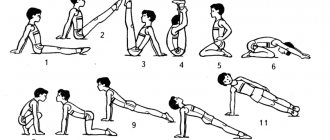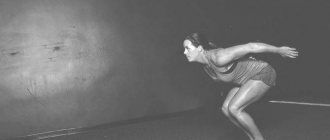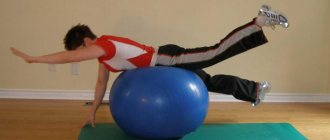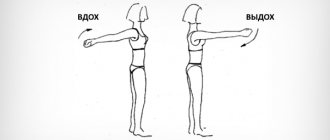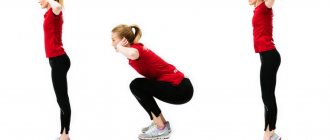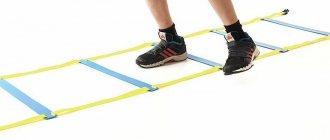One of the popular ways to measure a person’s speed abilities is to run a 30-meter distance against the clock. The frequent use of this distance is due to its simplicity, since it only requires a treadmill and a stopwatch.
It is also worth noting that a distance of 30 meters allows you to determine speed abilities at any age without affecting endurance, since even running 60 meters requires a certain reserve of endurance in the last meters of the distance.
The thirty-meter race is not regulated by the IAAF, which means that the European and World Championships are not held in it. In addition, there are no official statistics on the best time at this distance. Accordingly, the distance cannot be included in the program of the Olympic Games.
How to do it: 30, 60, 100 meter run
Running is carried out along the stadium tracks or on any flat, hard-surfaced area.
The tracks are marked with white paint, the width of the marking lines is 5 cm, the width of the tracks is 1.22 ± 0.1 m. The slope of the track in the running direction should not exceed 1:1000. The result is recorded with an accuracy of 0.1 s.
The 30 meter run is performed from a high start, the 60 and 100 meter run from a low or high start.
Participants start in groups of 2-4 people.
Errors
Errors that result in the test not being counted:
- the participant is not ready to start 2 minutes after the starter is called;
- a participant leaves his track while running, interfering with another test taker;
- the participant starts before the starter’s command “March!” or a shot.
Start
As soon as the starting signal sounds, you need to rush forward with all your might in order to reach maximum speed in the shortest period of time. Remember that very often a distance of 30 meters is covered in less than 5 seconds.
While running, the arms maintain the same position: the elbows are bent at 90 degrees. You cannot swing your arms straight, as this will not only not give you speed, but on the contrary, it will reduce it. This is due to the fact that if the movements of the arms are too large, then the body will “dangle” from side to side. And this is a precious fraction of a second. The palms are not tightly clenched into a fist.
It is very important to maintain maximum speed throughout the entire distance, which, as a rule, is achieved 1.5-2.0 seconds after the start. Speed losses should be minimal. But here a lot depends on the athlete’s physical preparation for such loads.
It is important to run in as wide strides as possible, and not to rush. At such short distances, both the width of steps and their frequency play a big role. The legs at the knees should work like machine shock absorbers, that is, they should spring with each step, throwing the athlete out with great force. As soon as the leg reaches a straight position, you must immediately bend it at the knee and move it forward with your thigh.
Only one toe comes into contact with the surface of the earth, and not the entire foot. This increases explosive power and reduces the likelihood of damage to the ankle and periosteum. The feet themselves are placed not to the sides or inwards, but strictly straight in the direction of running. This significantly reduces the likelihood of injury and increases the athlete's speed.
No matter how surprising it may be, the body should be relaxed during the race, since the presence of tension constrains movements, reduces vigilance and, therefore, increases the likelihood of serious mistakes. However, this does not negate the importance of the fact that maintaining alertness and concentration during a race is extremely important.
How to do it: 1000, 1500, 2000, 3000 meter run
Endurance running is carried out on a stadium treadmill or any flat terrain. The test is performed from a high start position. A group of participants line up 3 meters before the starting line. The assistant starter calls the participant, who calls his number.
At the command “Start!” Participants take their places in front of the starting line. After the starter fires from a pistol or the command “March!” they start running.
When running, participants are prohibited from stepping on the edge line on the left side, which will lead to a reduction in the distance.
The result is recorded by the chronometer in minutes and seconds with an accuracy of 0.1 seconds.
Preferably, the track should have a circular shape with circles of 500 meters, which will allow you to see all participants and provide medical assistance in a timely manner. The maximum number of participants in one race over a distance of 1,000 - 2,000 meters is no more than 15 people, 3,000 meters - no more than 20 people.
Preparation plan
Ideally, 3 km running tactics require good preliminary preparation. It would seem that the distance is not too long and not a sprint. However, it is important to develop all running indicators: MOC, PANO, muscle strength, running economy, endurance. To do this, you need to create a competent training plan.
Each person has an individual level of physical fitness, target speed, time before the race. Therefore, ideally, a training plan should be developed by a coach for a specific request.
If this is not possible, use our universal training plans, which contain everything you need to successfully pass the standard!
Download training plans to prepare for the marathon and half marathon.
Start preparing right now!
Ideally, each training week should contain 5 workouts + 2 recovery days. Therefore, we offer an indicative 5-day plan for 1 week.
More than 3 weeks before the start
- Tempo run 5-7 km. Heart rate is about 165-170 beats/min;
- Power training;
- Slow cross 6-8 km. Heart rate 140-145 beats/min;
- MPC intervals:
- 400m above target pace + 400m slow - 8 cycles total;
- or 600 meters at a pace above target + 400 meters slowly - 5 cycles in total;
- Slow cross 8-12 km.
Less than 3 weeks until the start
- Tempo run 5-7 km. Heart rate is about 165-170 beats/min;
- MPC intervals: 400 meters at a pace above target + 400 meters slow - 8 cycles in total;
- Slow cross 6-8 km. Heart rate 140-145 beats/min;
- MPC intervals: 600 meters at a pace above the target + 400 meters slowly - 5 cycles in total;
- Slow cross 8-12 km.
Pre-launch week
The tactics for running 3 km say: a week before the start should allow the body to fully recover before the race. It is important that the last intensive training is no later than 6 days before the start, and strength training – 2-3 weeks.
When considering the pre-race week, it is more convenient to start from the end (the day of the race):
- 1 day before the start: rest;
- 2 days before the start: easy cross-country / 3-4 intervals of 200 meters at target pace. You run a segment of 200 meters, then walk back to the starting point;
- 3 days: rest / 3-4 intervals of 150-200 meters (target pace);
- 4 days: cross-country 4-6 km (easy pace);
- 5 days: 2 km jogging + warm-up + SBU (special running exercises) + 500 meters at target pace + rest + 500 meters at target pace + 1 km jogging + cool-down;
- 6 days: long cross-country 6-8 km (calm pace);
- 7 days: 600 meter intervals faster than target speed + 400 meter easy run - 3 cycles total. Or 400 meters faster than target pace + 400 meters jog - 5 cycles.
How to do it: 3x10 meter shuttle run
Shuttle running is carried out on any flat surface with a hard surface that provides good grip on shoes.
The exercise is performed on a flat area with marked start and finish lines. The width of the start and finish lines is 10 meters.
On the command “March”, the student must run 10 meters, touch the platform behind the turn line with any part of the body, turn in a circle, and thus run two more segments of 10 meters. It is recommended to carry out testing in competitive wrestling, with a minimum of two people starting.
Test technique
On the command “To start”, the test taker stands in front of the starting line, so that the starting leg is at the starting line, and the other is placed half a step back (stepping on the starting line is prohibited).
At the command “Attention!”, slightly bending both legs, the test subject tilts the body forward and transfers the weight of the body to the front leg. It is acceptable to rest your hand on the ground.
On the command “March!” (while turning on the stopwatch) the test taker runs to the finish line, crosses it with any part of the body, returns to the start line, crosses it with any part of the body and overcomes the last segment to finish.
The judge stops the stopwatch the moment the finish line is crossed. The result is recorded up to 0.1 seconds.
Errors
Errors that result in the test not being counted:
- the participant began performing the test before the judge’s command “March!” (false start);
- while running, a participant interfered with someone running next to him;
- the competitor did not cross the line during the turn with any part of the body.
The main mistakes made by unprepared athletes
A beginner athlete can make mistakes that will cool his aspirations to achieve positive results at a distance.
Let's look at the most common mistakes athletes make:
- Uncomfortable shoes;
- Incorrect alignment of forces, priorities, tasks;
- Incorrect running stride;
- Loss of breathing control;
- Incorrect hand operation;
- Insufficient amount of water in the body;
- Wrong clothes.
A state of fatigue caused by an incorrect training schedule. Such errors cause discomfort while running, which affects the general condition of the running person, distracts him, and significantly reduces results.
I'm losing my breath
This problem is familiar to all athletes who have just begun to engage in a certain sport, running is no exception.
It is possible to overcome this problem if you adhere to the following rules:
- Use the principle of nasal breathing. Exhale and inhale air exclusively through the nose. This type of breathing allows you to clear the air of unwanted dust microparticles and warm it. It is a mistake to think that this technique is used exclusively in the cold season. The goal is not to warm the air and not cold the bronchi. Using this breathing technique will ensure a stable flow of signals to the brain centers responsible for breathing. The absence of such stable signals will lead to the fact that the body will begin to act hastily, namely, to direct all its efforts to stabilize this process of eliminating unwanted stimuli, that is, running. All body systems will receive an order to stop the runner and thereby even out the entire breathing process.
- Mouth breathing is suitable for beginners who have not exercised for a long time. This type of breathing allows you to saturate your lungs with the necessary oxygen in a short period of time.
- Alternating different breathing techniques allows you to choose the optimal breathing option for a beginner who has not exercised for a long time.
Using the above-mentioned breathing techniques, you can normalize the flow of oxygen into the body, which will prevent shortness of breath
If there is a need to stop while running and take a breath, you need to take a short break, which will not exceed 30 seconds, and then continue running.
After the third workout, you can’t stop running; if you lose your breath, you need to reduce the pace of movement, and then, when it normalizes, go to the pace that was set at the beginning of the run.
Incorrect technique
The following actions should not be allowed while running:
- Make sudden movements;
- Footwork should be smooth;
- You can’t put your leg out, you need to straighten your leg smoothly;
- Talk while running;
- Take a break from breathing techniques.
Avoid such actions, because they can not only reduce performance, but also lead to various injuries.
How to do it: mixed movement
Mixed movement consists of running, turning into walking in any sequence. Mixed movement at a distance of 1, 2, 3 kilometers is carried out on a stadium or any flat terrain.
A group of participants line up 3 meters before the starting line. The assistant starter calls the participant, who calls his number.
At the command “Start!” Participants take their places in front of the starting line. After the starter fires from a pistol, or the command “March!” they start moving. Each participant chooses a combination of walking and running segments independently, depending on how they feel.
Stage I test takers are recommended to start the test with running and, as they get tired, switch to walking; for older age groups, it is advisable to start the test with walking, and everyone chooses the pace according to their well-being, then you can increase the frequency of steps and switch to fast walking, and if you feel well, then run.
The maximum number of participants in the race is no more than 20 people.
Nutrition before the race
How to quickly run 3 km on a full stomach or without glycogen reserves? - No way!
Be sure to eat slow carbohydrates 2-3 hours before the competition: porridge, hard pasta. Try to eat foods that are familiar to your body.
An unusual lunch + exercise can put double stress on the gastrointestinal tract. Food will be less digestible, and the body will spend a lot of energy.
Test technique
The test involves walking with poles, the structure of the movement is reminiscent of skiing. The stick is held by the handle; in addition, a loop is put on the wrist, which allows you not to drop the stick.
The movement cycle involves alternating push-off with the leg and the opposite arm. In the phase of transferring the leg, the opposite hand with the stick is simultaneously extended and at the moment of contact of the leg with the support, the end of the stick is placed on the ground at an acute angle to the horizon in the direction of movement. At this time, pressure begins on the stick, making it easier to push off with your foot.
The maximum number of participants in one run is no more than 20 people.
If necessary, participants are provided with poles, the height of which is selected taking into account the height and physical fitness of the participants.
The height of the poles is selected based on the height of the participant.
The formula for determining the height of the poles is calculated by multiplying a person’s height in centimeters by a coefficient of 0.68 (±5cm).
How to do it: cross-country skiing (moving on skis)
Cross-country skiing (movement on skis) is carried out in a free style at distances laid primarily on terrain with weak and moderately rugged terrain in places sheltered from the wind in accordance with Appendix 7 to SanPiN 2.4.2.2821-10 “Sanitary and epidemiological requirements for conditions and organization training in general educational institutions”, approved by Decree of the Chief State Sanitary Doctor of the Russian Federation dated December 29, 2010 No. 189.
When organizing a mass start, a group of participants is lined up 3 meters before the starting line; when starting an individual start, according to the start protocol with a time interval (15, 20 seconds, etc.).
The assistant starter calls the participant, who calls his number. At the command “Start!” participants (participant) take their places in front of the starting line. After the starter fires from a pistol or the command “March!” they start moving.
The participant is considered to have finished (the finishing time is recorded) when the test taker's foot crosses the finish line with the toe of the boot.
All results remain preliminary until the controller sheets are verified.
Safety while running
Remember safety precautions during training and competitions. Start your workout with a warm-up. Go jogging and do some stretching exercises. Increase the load gradually. Don't try to achieve results right away. In this case, your actions will only lead to injuries, because you can damage your knees and joints.
Choose sports shoes responsibly. The right shoes will help you avoid injuries and unnecessary fatigue. Sneakers must have good cushioning. For a runner, it is important that the foot is well supported. If you're spending time trying to fit your foot better in your shoes, you might want to consider choosing better running shoes. Check your lacing before running.
Pay close attention to the condition of your heart. Don't overload yourself with training. Take time to rest and strengthen your cardiovascular system.
For such training you will need:
- Climbing uphill. You can use Finnish walking poles.
- Alternate jogging and running at high speed.
- Running on an uneven surface.
- Football, basketball, volleyball. Any sports game is an excellent workout for the whole body.
How to do: swim test
The test is carried out in swimming pools or specially equipped places on bodies of water. It is allowed to start from a stand, a side or from the water (at the discretion of the subject).
The swimming method is arbitrary. The participant touches the wall of the pool or the edge (border) of a specially equipped swimming area with any part of the body at the completion of each segment of the distance and at the finish.
Errors
Errors that result in the test not being counted:
- walking or touching the bottom with your feet;
- using path dividers or improvised means to promote or maintain buoyancy.
How to do it: running long jump
The running long jump is performed in the appropriate jumping sector. The measurement is taken along a perpendicular straight line from the nearest mark left by any part of the participant’s body to the take-off line. The participant is given three attempts. The best result counts.
Test Evaluation Rules
The senior judge determines the correctness of the jump, the measuring judges measure the result or set the bar. The secretary keeps the testing protocol.
When performing a test, the participant has the right to mark his run with the provided marks or his own. Markings with chalk or paint are not allowed. The participant has the right to perform trial attempts under the guidance of the judges before the start of the tests if there is sufficient time.
From the moment the tests begin, warming up in the jumping sectors is not allowed. During testing, each participant is given three attempts. Participants perform all attempts one by one.
The participant begins the attempt only at the invitation of the judge. You are given 1 minute to prepare and perform a jumping attempt.
The countdown begins from the moment the judge invites the participant to perform an attempt. Between attempts, the participant has the right to a three to four minute break. If a test taker deliberately delays the completion of an attempt, he may be deprived of this attempt; if a participant is interfered with while performing an attempt, the senior judge has the right to provide him with a replacement attempt. The participant has the right to refuse another attempt without losing the right to perform subsequent ones.
After completing the attempt, the judge, in the absence of a violation, gives a command - the signal “Yes!” and raises a white flag or, if the rules are violated, the signal “No!” and raises a red flag.
The results of all successful attempts are measured and entered into a test protocol in the established form. Unsuccessful attempts cannot be measured. The best result counts.
If testing is interrupted due to weather conditions or other objective reasons, the chief judge may allow testing to be carried out again with the same participants or from the moment of the interrupted attempt. If tests are rescheduled to another day, they will start on the first attempt.
Taking off in jumps is performed with one foot from the surface of the bar or track, without stepping beyond the take-off line.
Jumping results are measured at the nearest point of the mark left by any part of the body (including the arms), in a straight line perpendicular to the measurement line.
Errors
Errors that result in the test not being counted:
- the participant, without performing a jump, ran over the block (or on the side of it) across the measurement line;
- the participant made a mistake or stepped on the measurement line;
- the participant performed a push-off from the side of the block;
- during landing, the participant touched any part of the body to the surface of the sector outside the side edge of the pit, while being closer to the take-off bar than the mark left during landing;
- after completing the jump, the participant returned back through the landing pit;
- when jumping, the participant used any form of somersault;
- the participant has exceeded the time allocated for his attempt.
Exercise, proper breathing
When inhaling and exhaling, it is recommended to perform these rhythms not only with a full chest, but also with the stomach. Namely, pay attention to the stages of breathing. When expanding the chest while inhaling, you should also focus on the stomach, trying to let its muscles help receive more oxygen. This way the athlete gets less tired. Not everyone will find this convenient at the beginning, because the abs are tense when running, it is difficult to force them to participate. But the feeling of wrongness will go away after a couple of workouts.
Another rule is to distribute the inhalation and exhalation in two steps, which helps to set and maintain a rhythm. Runners practice breathing through their mouths and noses, trying to get more oxygen to their muscles, which will result in less fatigue.
How to do it: standing long jump with a two-foot push
A standing long jump with a push with two legs is performed in the appropriate jumping sector. The take-off point should provide good grip on the shoe. The participant takes the starting position: legs shoulder-width apart, feet parallel, toes in front of the take-off line. A simultaneous push of both legs is used to jump forward. Waving your arms is allowed.
The measurement is taken along a perpendicular straight line from the point of repulsion to the nearest mark left by any part of the participant’s body.
The participant is given three attempts. The best result counts.
The participant has the right:
- when preparing and performing a jump, make swinging movements with your arms;
- use all the time (1 minute) allotted for preparing and performing the jump.

